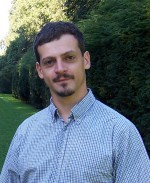Column Name
Title
“Should we also stop shaving before the concert, and wear sandals with socks onstage?” asked the violinist with a mischievous smile, after I had suggested that the last note of the movement could be played without vibrato. In 2006, the String Orchestra of New York City embarked on a Bach project and invited me as a special guest for the occasion. The image of the hippie musician made me laugh, because it reminded me of my years at the Oberlin Conservatory; however, SONYC showed more interest in my arguments than I could have imagined. But this joke made me wonder how many stereotypes persist among Juilliard’s faculty and students about early music performers. I know that many faculty members have experienced playing original instruments and are preoccupied with musical considerations of a historical nature. But I also heard one of my teachers ask me to go easy with Baroque performance practice in rehearsals with instrumentalists who asked me to play with them. I didn’t follow the advice, and the fellow students who could bear with me ended up playing in such a way that the musical result was very valid despite their use of modern instruments.
Body
I grew up playing the piano in Lyon, France; my younger sister played recorder and we both attended the Conservatoire. Michel-Richard Delalande’s Air pour un niais et une niaise (which translates loosely as “Air for a dorky boy and a dorky girl”) was our cult piece. But we used it to parody the “Baroqueux” (slang for Baroque music people), whom we found pedantic, affected, and weird; together, we ridiculed the mania for clipping the ends of the slurs like someone who has a hiccup. I had learned to play Bach cantabile style, and it was quite a noble way of playing. Much later, during my historical performance studies at Oberlin, I became familiar with many historical treatises and found the florid images used to talk about music so attractive that I couldn’t stop reading. Under the meticulous guidance of Lisa Goode Crawford, I learned to play the harpsichord in an idiomatic way and it shed a whole new light on my approach to the music of Bach. I learned to listen to the way figures affect the resonance of the harpsichord, and explored many ways of articulation. But at some point I found myself so obsessed with playing with historical techniques that I couldn’t work on a piece without opening three or four books and looking in vain for the most authentic fingering. Was I going to become a Baroqueux? I guess I came to Juilliard because I wanted to become a mainstream musician who plays early music, not a specialist locked in his niche—and I am glad that, here, I can be a harpsichord student and write papers on Mahler and Boulez. And I will be forever grateful to the memory of my teacher, Albert Fuller, for whom the highest communicative fervor was an absolute priority in music.
The creation of a historical performance program at Juilliard—which begins this month with a weeklong workshop conducted by William Christie and artists from his Paris-based ensemble Les Arts Florissants (to be repeated next year), and will expand into a master’s degree program beginning in fall 2009—presents many challenges. It is not at all like creating a jazz program, because the students will play a lot of the same music that is performed on modern instruments. I hope that the program will create a constructive dialectic with an organic role in the Juilliard community. It is crucial for Juilliard to avoid both the alienation of the early music students in a Baroque ghetto, and the parallel perpetuation of “traditions” of interpretation for Baroque music that conflict with much historical evidence and present distorted images of the way any musician would have performed 300 years ago. I am always happy when modern instrumentalists include early music in their repertoire, and they shouldn’t feel that groups playing on “original” instruments are stealing the Baroque repertoire from them. But its original musical effect and its ideal of sound must be in their ears.
Juilliard’s program is being inaugurated about four decades after the New England Conservatory’s and Oberlin’s pioneering programs, and 24 years after the Paris Conservatory’s Département de Musique Ancienne. However, Juilliard can create a unique venue for early music if it uses every opportunity for a real exchange between all departments, including dance (Baroque dance), drama (music for the stage and Baroque gestures), jazz (as classical musicians’ understanding of historical improvisation is still in its infancy), and liberal arts (exploring Baroque philosophy and rhetoric).





